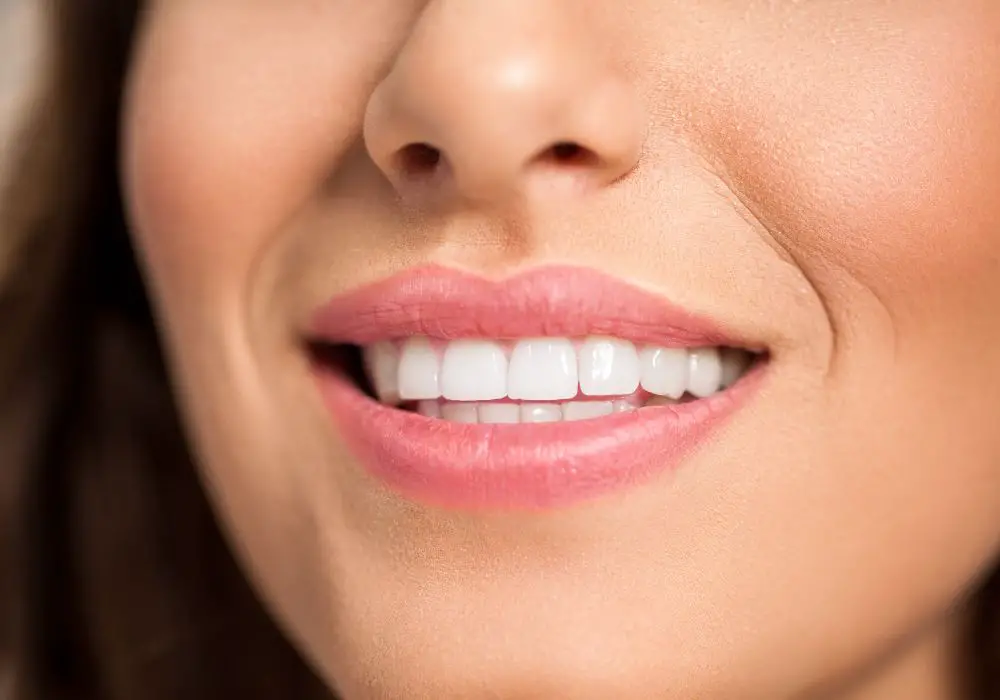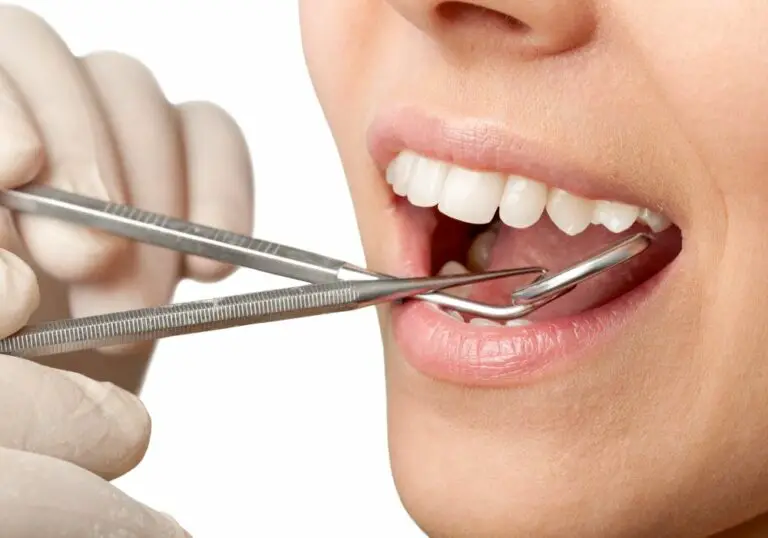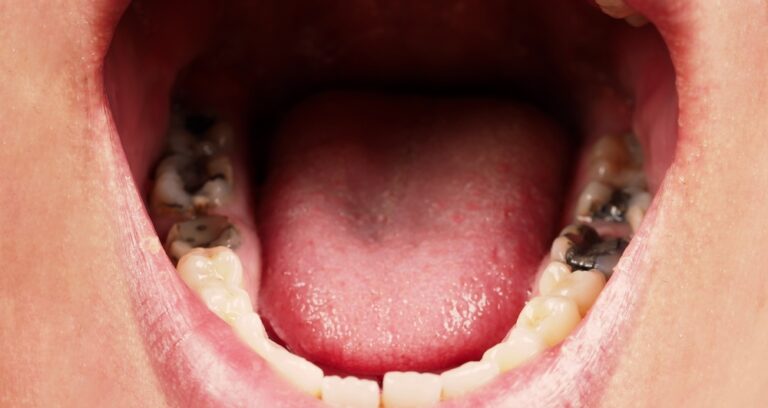Your teeth hold a trove of data that enables identification through forensic odontology. From distinctive dental work to the microscopic wear patterns, teeth can provide positive clues to an individual’s identity. This in-depth guide covers all the ways teeth can be used to identify both living and deceased persons.
Unique traits of human dentition

Human teeth have highly distinctive traits that act as “dental fingerprints” for identification purposes. Even identical twins have slight differences in their teeth. Here are the key distinguishing characteristics:
Tooth shape and crown morphology
The size, shape, and color of tooth crowns varies between individuals. Teeth may be small or large, tapered or squared, straight or twisted. The biting edges can be sharp and jagged or rounded and worn. Built-up crowns also have distinct shapes.
Gumline and gingival contours
The height of gum tissue and its contoured shape around each tooth creates a signature gumline per person. Receding gums expose more tooth and root surfaces in a unique way. Gum disease also causes distinctive loss of bony support around teeth.
Alignment, spacing and crowding
Teeth may align in straight rows with symmetrical spacing or exhibit crooked, overlapping, or gapped positioning. Rotated and ectopic teeth also occur. Crowding shows the “path of eruption” traveled during development. Spaces are filled based on shape.
Wear patterns and erosion
The biting surfaces of teeth wear down in a habitual way based on an individual’s diet, bruxism, and other behaviors. Erosion and abrasion patterns reflect habits like nail-biting orfrequent soda drinking. The angle of wear slopes surfaces uniquely.
Tooth defects and anomalies
Developmental defects like enamel pearls, talon cusps, or peg-shaped incisors provide distinctive identifiers. Impacted, fused, and supernumerary teeth also offer identification clues based on type, positioning, and number.
Dental restorations and appliances
Fillings, caps, crowns, implants, bridges, dentures, and braces all leave unique indicators of dental history. The individual size, shape, material, location, brand, and time period of installation can distinguish these interventions.
Sinodonty and sundadonty traits
These terms refer to tooth shape attributes seen in Asian and Native American populations respectively. Shoveling, cusp size, root patterns, and enamel extensions give information about racial or ethnic ancestry which aids identification.
Number of teeth present
The complement of natural teeth remaining and those congenitally missing establishes dental status. Deciduous versus permanent dentition also indicates age. Extractions, impactions, and third molar presence provide further clues.
Periodontal ligament patterns
The unique directions and orientations of periodontal ligament fibers around each tooth become calcified during decomposition. These create distinctive markers, like personal ID tags inside each socket.
Dental features used in identification

Forensic odontologists analyze postmortem dental data and compare it to antemortem dental records to establish identity. Here are the features they focus on:
Dental charting
Complete dental charts record every tooth, filling, crown, veneer, implant, bridge, denture, and dental anomaly. Charts note missing teeth, decay, materials used, tooth size and shape. Comparing charts provides matches.
Radiographs
X-rays like bitewings, periapicals, panoramic, and 3D scans document underlying traits and pathologies. Internal structures like pulp chambers and root shapes also distinguish teeth. Finding identical radiographic features confirms identity.
Photographs
Clinical photographs taken at various angles demonstrate fine visible details. Teeth with distinctive traits are captured alone and in occlusion. Photos document restorations, prostheses, decay, and anomalies. Matches link to identity.
Casts and models
Stone casts preserve 3D replicas of the teeth in exact detail, recording subtleties in shape and position. Bite registration captures the closure pattern. Wax “toothprints” duplicate traits. All provide comparative data points.
Histology
Microscopic tooth structure like enamel rod patterns, contour, thickness, opacity, and incremental lines serves to distinguish individuals based on developmental history. Cementum patterns also aid identity determination.
DNA
Pulpal tissue holds person-specific DNA that can be extracted for identification matching. Mitochondrial DNA offers backup identity data when other material is limited. Y-chromosome DNA confirms male gender.
Chemical analysis
Elements and isotopes incorporated into teeth during development indicate age, diet, and geographic origin. Radioactive carbon-14 and trace minerals offer circumstantial evidence to support identity findings.
Forensic odontology identification techniques

Dental forensics employs an arsenal of approaches to unlock identity clues found in the dentition. Here are some key techniques in practice:
Dental chart comparisons
Matching specific dental work, tooth anatomy, and radiographic traits found on antemortem and postmortem dental charts provides the first line of evidence. Digital charting streamlines case management.
Bite mark analysis
Bite marks left on victims or food are compared to a suspect???s bite impression and dentition. Board-certified forensic odontologists use digital overlays and biomechanical bite analysis to match DISTINCTIVE traits.
Photographic superimposition
Teeth, jawlines, and occlusion are matched between antemortem and postmortem photographs. Digital programs overlay images to demonstrate congruity. Similar methods merge skull radiographs with dental films.
Dental recognition software
Sophisticated algorithms automatically compare digitized dental records against unknown remains. They score matches and rank them to aid investigators. Large databases can be searched efficiently.
Forensic archaeology methods
Archaeological excavation protocols applied in forensic cases preserve fragile remains and provenience. Grid searches locate scattered dental evidence. Acid etching of tooth surfaces reveals age and diet.
Molecular analysis
Salivary DNA traces link suspects to bite marks on skin or objects. Bacterial microbiome DNA in dental plaque connects individuals with remains through shared oral microbiota.
Age estimation
Dental formation stages evident radiographically provide age brackets for children and youths. Adult age prediction uses pulp chamber size, cementum patterns, transparent root dentin, and other age-related changes.
The role of teeth in disaster victim identification
When disasters like plane crashes or building collapses occur, dental evidence often provides the primary means of identifying victims. Teeth offer several advantages in these situations:
Durability
Teeth resist decomposition and withstand trauma more than other tissues due to their calcified structure. This preservation aids discovery and data collection at chaotic disaster sites.
Individuality
As described earlier, even a single tooth holds many distinctive traits providing clues to identity. Victims that lack discernible fingerprints or usable DNA often can still be identified from dental evidence.
Availability
People routinely have dental x-rays allowing antemortem comparisons. Dental insurers maintain detailed, current dental records that can be accessed by authorities. This facilitates the victim identification process.
Portability
Teeth fossilize well and can be separated from remains through taphonomic processes. Their durability allows searchers to recover even scattered, fragmented dental structures from extensive debris fields.
Quantification
There are structured methods to quantitatively analyze dental features and statistically match them to known records. This lends scientific rigor to victim identifications in mass fatality contexts.
DVI response to 9/11

The 9/11 attacks unleashed enormous forensic response efforts focused heavily on dental identification. Here are details on the role teeth played:
Scale of effort
Over 50 forensic odontologists worked for over a year in the medical examiner’s makeshift morgue. They attempted to identify some 20,000 pieces of recovered remains through dental evidence.
Sequence of procedures
AM and PM dental records were digitized into a searchable database. Remains were charted and categorized by dental features. Matching software ranked potential identity leads for follow-up.
Supporting technologies
Innovative technologies like automated dental recognition, 3D modeling, and DNA analysis supported traditional dental ID methods. This enabled efficient, high-volume victim identification.
Quantifiable success
Statistics quantified the critical role played by dental evidence, which accounted for virtually all of the 20,000+ victim identities established. 75% had no other identifiable features beyond their teeth.
Continuing re-examinations
Ongoing re-testing of remains using advancing capabilities continues to yield new identifications even today. The power of forensic odontology is still being applied to find closure for remaining 9/11 families.
Limitations and scientific scrutiny
While clearly beneficial, forensic odontology has limitations and has faced scrutiny as a subjective practice lacking statistical strength:
Missing dental records
Insufficient or absent dental records makes antemortem comparisons impossible, especially for juveniles and those lacking dental interventions. This constraint significantly limits identifications.
Subjectivity
There is inherent human subjectivity in evaluating subtle dental traits across sets of records and remains. Statistical validation has traditionally been lacking to scientifically quantify reliability.
Cognitive biases
Contextual information about a case or suspect may influence examiners to see more matches between bite marks or records than truly exist. This illustrates confirmation bias.
Bitemark pseudoscience claims
Bitemark analysis rested historically on debunked claims of uniqueness. Statistically validating this technique remains elusive. Bitemarks lack definitive identification potential due to crushing injuries and distortions.
Lack of standards
There is no agreed upon standard training curriculum for odontologists. Certifying boards have varying requirements and inconsistent inter-rater reliability. This variability impacts scientific validity.
The future of forensic odontology
Despite current limitations, the future promises continuing enhancement and expansion of forensic dental capabilities:
Objective digital dentistry
3D scanners, advanced photography, and software automation provide more objective dental data for analysis free of human examiner subjectivity. This bolsters scientific validity.
Dental microbiome analysis
Each person hosts a unique oral microbiome which colonizes the teeth and gums. Microbiome DNA provides another mode of distinctive biological association to supplement dental record matching.
Mobile disaster response capability
Rapid dental identification systems like DMORT deploy onsite with mobile labs, digitization, and database support. This accelerates DVI results following mass fatalities or disasters.
Nanotech tooth tags
Tiny biocompatible nanotags implanted in tooth crowns during dental work hold encoded data for identification. They could uniquely tag people against their dental records.
AI analysis and recognition
Automated learning algorithms applied to worldwide dental databases can highlight non-obvious correlations and patterns within volumes of dental data. This amplifies identification capability.
Teeth represent an invaluable source of integrated biometric, demographic, behavioral and embodied identity unique to each person. Dental forensics ensures this biological individuality transcends life and enables positive identifications with certainty and compassion.
Frequently Asked Questions
How unique are dental characteristics for identification?
Dental traits offer a high level of individual uniqueness rivaling fingerprints. Subtle variations in tooth anatomy, alignment, spacing, wear, dental work, and radiographic landmarks create distinctive patterns identifying each person. Even small tooth fragments hold identifying marks.
When was dental evidence first used in forensics?
The first recorded forensic dental identification occurred in 66 AD when Nero’s mistress was confirmed by her bridgework. In the late 1700s, Paul Revere analyzed dental work he performed himself to formally identify Revolutionary war casualties. Dental forensics originated out of need.
What percentage of disaster victims are ID’d using dental records?
Statistics show dental identification accounts for approximately 75-80% of all positive identifications following mass fatality incidents when other methods like fingerprints or DNA may not be available. Teeth provide durable, individualized clues.
Does DNA extracted from teeth offer more conclusive identification?
DNA from pulpal tissue or tooth roots can certainly provide supplemental supporting evidence corroborating dental record matches. But technical issues like contamination and degradation can impair DNA testing, unlike the durability of dental evidence.
Can teeth survive cremation or being burned?
Yes, dental structures withstand even severe burning and can be identified. Tooth enamel becomes calcined retaining shape and restorations. Roots fracture but offer DNA. While damaged, burned teeth still hold recognizable identifying features useful forensically.






